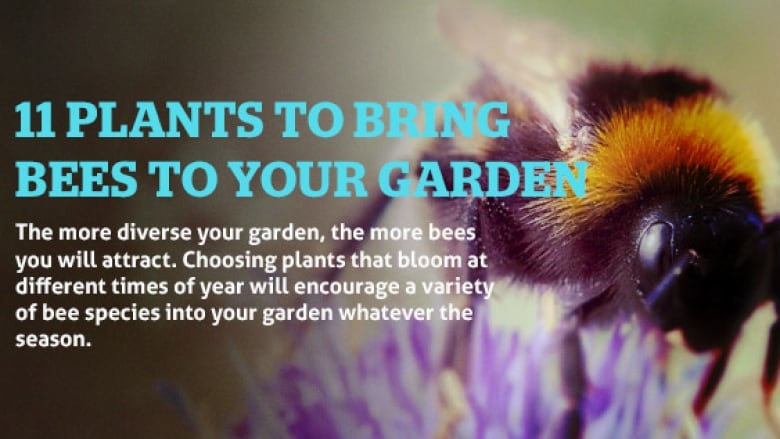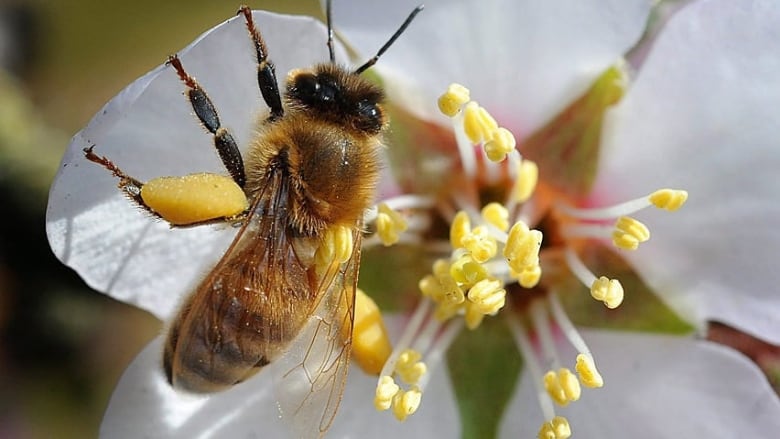11 plants to make your garden bee-friendly
How your own backyard can help a population under threat

As the worldwide decline in bee populations reaches crisis point, B.C. bee organizations are encouraging residents to give a thought tothese fierce little pollinators, and plant gardens that will help in their survival.
And, according toBrian Campbell, master beekeeper at Vancouver's Blessed Bee Community Apiary and Bee School, you will be doing us all a good turn.
"We need bees more than bees need us," he says. "They connect plants to plants, plants to animals and they create beauty and bounty."

He says there are 56 species of bees native to Vancouver alone, and that's not including honey bees and other non-native species.
Different species of bees are attracted to different plant species, so the more diverse your garden, the better it is for the bees.
Take your vegetable patch: those potatoes, blueberries, tomatoes, and eggplants all need bumblebees to come by and "buzz" out their particularly sticky pollen, Campbell says.
"Bumble bees are able to hit a certain pitch a C note that is able to release pollen from certain plants."
The best thing you can do, Campbell says, is to introduce plantsthat bloom at various times throughout the year, of different heights and with a variety of flower colours, shapes and sizes.
11 bee-friendly plants:
Spring
1. Thrift (Armeriamaritima): Bright pink clusters of flowers make this a welcome addition to any garden. It does particularly well in dry, sandy soil.
2. Chives (Allium shoenoprasum): Easy to grow, great in salads, chives produce purple flowers in spring that will bring bees flocking to your vegetable patch.
3. Bugloss (Brunnera): This early perennial produces bright blue flowers in April that continue for several weeks. Give it a shady spot and keep it watered in summer.
Summer
4. Rose (Rosa): Who doesn't love a rose? Keeping your garden rosy is a sure-fire way to please the bees.
5. Foxglove (Digitalis purpurea): A good choice for those shadier spots in your garden, the foxglove's bells provide a welcoming space for bees in the summertime.
6. Black-eyed Susan (Rudbeckia fulgida): A great pop of colour that lasts throughout August and September, this summer perennial produces s bright clumpof blooms, highly-addictive to bees.
Fall
7. Helen's Flower (Helenium autumnale): Make sure you water this tall plant plentifully and it will reward you with beautiful daises case in yellow, gold and rusty reds.
8. Autumn Joy (Sedum var): This compact perennial will give you the most bloom for your buck, beginning in mid-July and continuing until the first frost lands.
9. Bluebeard (Caryopteris xclandonensis): A real bee favourite, this low growing shrub likes dry, sunny spot.
Winter
10. Christmas Rose (Helleborusorientalis): Blooming from January to April, this evergreen perennial performs well in shady sites.
11. Oregon Grape (Mahonia): Growing six to eight feet tall, this evergreen shrub blooms as early as January through March, giving your winter garden an attractive splash of colour and the bees a warm winter welcome.
Source: Feed The Bees












_(720p).jpg)


 OFFICIAL HD MUSIC VIDEO.jpg)
.jpg)



























































































